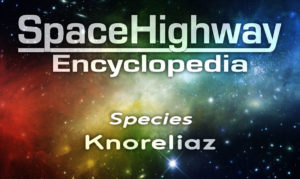Space Gates
Table of Contents
Most big planets with enough traffic have its own Space Gate station. Those with high volume traffic have a Space Gate Complex.
The interior between Gates is similar to old-fashioned tunnels with several lanes apt for the width of a space-truck. Those tunnels are commonly called space-highways. Most space-highways have several exits and access points, similarly to the old Gaian terrestrial motorways and highways.
Relative velocity of each space-vehicle is maintained, meaning, that faster vehicles can pass slower ones.
The total travel time through a Space Gate is completely dependent on the vehicle’s performance.
Common, although not official, names given to the Space Gates are Star Jumps, Star Gates, Stargates or simply Jumps.
Tariff
Space Gates are tollways and collect fees depending on the type of space vehicles. Albeit not being cheap[citation needed], the use of Space Gates is less expensive than the consumption of fuel over the same distance.
Travel Times
As Space Gates shorten drastically the distance, less time is needed to travel between origin and destination port. Reducing the distance and time needed per route, makes the Star Gates system essential for space travel as more passengers and cargo can be hauled between the connected systems.
Shorter distances and time consumption means that any major transport enterprise has a contract with the Space Gate Cooperative. An automated system collects the fees automatically from the trucks using the system and is billed to the associated enterprise.
Space Gate Station
A Space Gate Station normally only has one to two Space Gates, which connect to a Space Gate Complex from where the traveler can choose its nearest destination Station.
Notable Space Gate Stations in the Sol System
- Mars. The fourth biggest raw material producer of the Sol system, mainly from agriculture and consumption goods.
- Jupiter. Biggest gas mining and refinery of the Sol system.
- Mercury. Metal, silicon and sodium mine and metsildium refinery.
- Neptune. Gas mining to feed the Sol system’s biggest foundry and producer metal alloys located near the same planet.
Space Gate Complex
A Space Gate Complex has, usually, from four to ten Space Gates. Exceptionally, if the traffic is high enough, they could have more.
Space Gate Complexes known as Hub Complexes may have up to thirty gates, such as the Alpha Centauri Complex and the Betelgeuse-Orion Complex.
Notable Space Gate Complexes
Gaia Gates Complex
Generally shortened to GGC.
The GGC is the biggest Space Gate complex of the Sol system. It has twelve gates and is considered an important Hub between the Felli-Empire and the Ïiha-Empire.
Alpha Centaury Complex
Generally shortened to ACC.
The ACC is one of the Hub Space Gate Complexes of the Milky Way Galaxy and one of the few Hubs counting with 30 gates.
Betelgeuse-Orion Complex
Generally shortened to BOC.
The BOC is one of the Hub Space Gate Complexes of the Milky Way Galaxy and one of the few Hubs counting with 30 gates.
Express Gates
Some Complexes offer Express Gates which are more expensive, but have no additional exits and a higher acceleration.
Still rare but in some solar systems they are being implemented, depending mainly on the cargo flow.
Express gates are only available for high-speed vehicles such as space-trucks.
Technology
The main technology is still undisclosed by the cooperative. Originally a Felii-Ïiha technology, both species have agreed that they would share their knowledge in form of a cooperative in which any species can participate.
It is assumed[by whom?], that the Space Gates are able to open wormholes through the fabric of space-time and to connect two points inside the universe.
The acceleration achieved, from an outside viewer, would be over than hundred times the speed of light, although it has never been confirmed by the SGC.
A further secret not disclosed by the SGC is the handling of time-distortion inside the Space Gates. Theoretically, the time-flow should be altered at such high speed, but does not occur inside the space-highways.
Inside the space-highways, time flows naturally as if in open space.
It is speculated that the technology used is similar to the FTL-power plants of bigger crafts and space-trucks, which is able to create a so-called time-bubble, but never verified.
Love this Space Highways Encyclopedia entry and want more?
 For more info, visit patreon.com/spacehighways
For more info, visit patreon.com/spacehighways












![[/carousel-item] [carousel-item]](https://spacehighways.net/media/2018/09/sh-patreon-support-sky-ad-chapter-200x700-e5.jpg)





